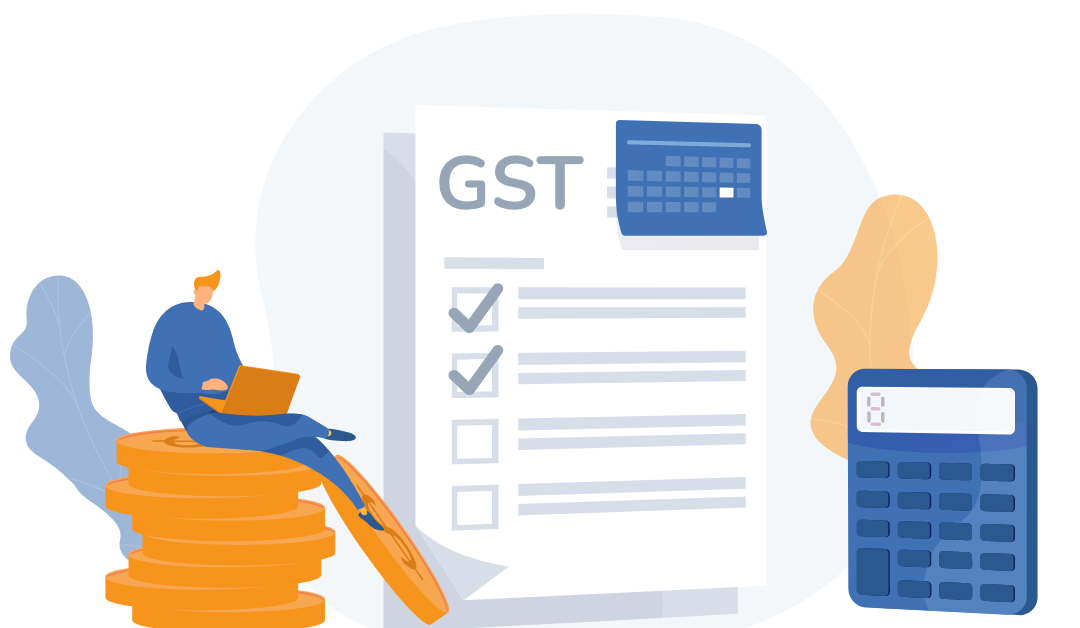What You Need to Know About Singapore GST

1 min Read
Goods and Services Tax (GST) is an indirect tax levied on most goods and services sold for domestic consumption. In other countries, GST is known as the Value-Added Tax or VAT. GST is paid by consumers but yielded to the government by businesses selling goods and services. As a result, GST provides revenue for the government.
The Inland Revenue Authority of Singapore (IRAS) mandates that certain companies register for GST while also allowing companies to register voluntarily. Thus, all GST-registered businesses are required to submit GST returns to IRAS periodically.
This guide provides an overview of the main concepts of the Singapore GST system as it relates to Singapore companies – the key facts, registration requirements, registration procedures, registration benefits, GST return filing, and schemes to assist businesses.
Singapore GST Key Facts
- The current GST rate in Singapore is 7%. The GST hike will not occur in 2021. Businesses should expect an increase of up to 9% between 2022 and 2025 (visit IRAS website for more information).
- The GST tax is charged to the end consumer, so GST is usually not a cost for companies. The business only acts as a collection agency on behalf of the Singapore tax department.
- GST is only charged by GST-registered businesses. Only businesses whose annual taxable turnover exceeds S$1 million must register. However, companies with income below this threshold can also register voluntarily.
- GST is also levied on imported goods (collected by Singapore Customs).
- GST import relief is currently granted to low-value goods (defined by a value of no more than S$400) imported by air or post.
- GST-registered companies must apply for GST returns with the IRAS monthly or quarterly.
- GST exemptions apply to the provision of most financial services, supply of digital payment tokens, sale and lease of residential properties, as well as imports and local supply of investment-oriented precious metals.
- The export of goods and certain types of services provided to overseas clients are zero-rated.
- GST-registered companies must charge GST on their supplies at the prevailing rate except for relevant supplies subject to customer accounting.
- The GST that businesses collect from customers is called an output tax. Conversely, the GST that businesses incur on their purchases and expenses (including import of goods) is called input tax.
- A GST-registered business can claim a credit for its GST input tax. Furthermore, the input tax can offset the output tax. Therefore, a GST-registered business only pays GST on the amount of “added value” for its product or service calculated as the difference between its output and input taxes.
The Requirements to Register for GST
GST is a self-calculated tax, and businesses must continually assess their need to be registered for GST. GST registration falls into two categories: mandatory registration and voluntary registration.
Mandatory Registration
Registering for GST is mandatory when:
- The company’s taxable turnover for the past 12 months exceeded S$1 million, or
- The company expects taxable income to exceed S$1 million in the next 12 months.
Notes:
- Companies are expected to monitor their taxable turnover at the end of each quarter to determine if they need to register for GST.
- If your company’s revenue exceeds S$1 million, you will need to submit the GST application to IRAS within 30 days.
- Failure to register your business with IRAS within the stipulated time frame will result in penalties.
Voluntary Registration
You may register for GST voluntarily if you are not obligated to register as mandatory, depending on your business operations. You must plan to make sales or have already started selling in Singapore (taxable supplies). Note that there are additional conditions if you choose to apply for GST voluntarily.
Furthermore, you must remain registered for at least two years and comply with GST regulations. You must also file for GST returns on time every three months and keep all your records for at least five years, even after your business ceases and you have unregistered from GST.
In addition, your company’s director(s) must complete two e-Learning courses; Registering for GST and Overview of GST. This is not required if:
- The company director has experience managing other existing GST-registered businesses.
- The person preparing the company’s GST refund is an Accredited Tax Advisor (ATA) or Accredited Tax Practitioner (ATP).
- The person preparing for the GST returns has completed the above e-Learning courses in the past two years.
How to be Exempt from GST Registration
Certain companies that are subject to mandatory GST registration can apply with IRAS to receive registration exemption if they meet the following criteria:
- The net balance of GST collected for supplies vs. GST paid for purchases is negative.
- At least 90% of the company’s total revenue comes from supplies that are not subject to GST ( “zero-rated” supplies).
Note:
Like unregistered GST companies, exempted companies cannot claim GST accrued on a business purchase. Therefore, if a company expects to receive credit for GST it has paid, it must register for GST.
How to Register for GST
There are only two processes in the GST registration, which are as follows.
1. Submit the application for GST registration with IRAS
Typically, your company’s GST registration can be done by an official corporate service provider like us. We will submit the application online via myTax Portal. To access the portal, you must first be authorized in CorpPass. The authorization can be for access to any of IRAS’ e-Services.
We will help you prepare the required documents in softcopy before you start the application process. These documents must be attached at the end of the application process.
2. Receive notification of the effective date of registration from IRAS
If your application is successful, IRAS will send a letter to your registered address notifying you that you have been registered with the GST. The letter will include the following information:
Your GST Registration Number
This is the number you need to print on invoices, credit notes, and receipts.
Your GST Registration Effective Date
This is the date you must start invoicing and collecting GST for your taxable supplies. You must not collect GST before the effective date of your GST registration.
Notes:
- If you are late in your application for compulsory registration, your effective registration date will be back-dated to the date you should have been registered.
- If you applied for registration voluntarily, you would be registered within two to three weeks from the date of the approval letter. The date of registration will not be backdated for claiming input tax.
What are the Benefits of Registering for GST?
GST registration is an efficient tax for the government due to the comparatively lower cost of administration and collection. It allows the government to lower corporate and personal income taxes, which in turn encourages more foreign direct investment. This leads to overall economic growth.
As for businesses and individuals, the benefits of GST registration are as follows:
- It gives a signal to customers that your business is an established business and has a certain size.
- The GST is a fairer tax system. It burdens self-employed and wage earners only when they spend their money.
- GST taxes apply only to consumption. Since saving and investment are not taxed, people are encouraged to save and invest in productive activities.
- The cost of running a business is reduced, contributing to lower prices. Companies are not subject to tax costs due to the tiered credit mechanism because the real taxpayer is the end-user.
How to File GST Tax Returns
As a GST registered entity, you must submit GST F5 return to the tax authorities based on your accounting cycle, usually every three months. The key facts to filing GST returns are as follows:
- Companies must pay GST to IRAS within one month of applying for the F5 return.
- Companies must report their input and output taxes.
- GST tax returns must be submitted electronically through the myTax Portal either on a monthly or quarterly basis.
- If there are no GST transactions during the accounting period, companies still have to file a zero return.
In general, IRAS will refund GST within 1-3 months of filing the F5 return. To receive a GST refund, your company must:
- have filed all GST returns on time,
- not be under an audit by IRAS, and
- not have taxes due or other payments due to IRAS.
You may also want to read this related article:
An Introduction to Singapore Corporate Tax Filing
Different Types of GST Forms
There are three types of forms used for filing GST:
- GST F5 return for periodic filing of GST
- GST F7 return for disclosing errors on GST returns filed previously
- GST F8 return for final filing of GST
GST Schemes to Aid Businesses
The Singapore government has introduced several assistance schemes relating to GST to ease the cash flow for businesses and help create a pro-business environment.
- Tourist Refund Scheme – allows tourists shopping in Singapore to request a refund for GST paid before leaving the country.
- Approved Contract Manufacturer and Trader (ACMT) Scheme – designed to exempt businesses (e.g., local contract manufacturers) with substantial business with overseas clients from the need to account for GST on value-added activities performed on those client goods.
- Approved Import GST Suspension Scheme (AISS) – eases the cash flow of businesses in the aerospace industry.
- Approved Marine Customer Scheme (AMCS) – facilitates compliance for ship owners and ship managers in procuring goods for use or installation on internationally bound commercial vessels.
- Approved Marine Fuel Trader (MFT) Scheme – will benefit eligible businesses in the bunkering industry that make local purchases of approved marine fuel oil (MFO).
- Approved Refiner and Consolidator Scheme (ARCS) – relieves cash flow and compliance of refiners and consolidators who meet the investment requirements of precious metals (IPM) in their GST payments on imports and purchases of raw materials and reduce input taxes arising from refining activities.
- Approved Third-Party Logistics (3PL) Company Scheme – increases the competitiveness of logistics companies that provide logistics management services to overseas clients who use Singapore as a logistics hub.
- Cash Accounting Scheme – available to small businesses whose annual sales do not exceed S $ 1 million. Under the scheme, businesses only need to account for the output tax when payment is received.
- Discounted Sale Price Scheme – allows you to charge GST on 50% of the sale price when you sell a used vehicle.
- Gross Margin Scheme – GST is calculated based on the gross margin, not the total value of the goods supplied.
- Hand-Carried Exports Scheme (HCES) – applicable if you wish to provide a zero rate on your supplies to overseas customers for goods brought from Singapore via Changi International Airport.
- Import GST Deferment Scheme (IGDS) – aims to relieve import GST cash flow arising from the time difference between import GST payments and import GST claims for GST registered businesses.
- Major Exporter Scheme (MES) – designed to substantially alleviate the cash flow of businesses that import and export goods.
- Zero GST Warehouse Scheme – allows you to import non-dutiable overseas goods into a ZG warehouse with GST deferred.

Subscribe to Our Newsletter
Stay up-to-date with our useful guides on company incorporation, accounting & taxation and business management!

Subscribe to Our Newsletter
Stay up-to-date with our useful guides on company incorporation, accounting & taxation and business management!
Need advice on the best structure
for your business
Biz Atom helps entrepreneurs and international business make the right choice when setting up in Singapore.